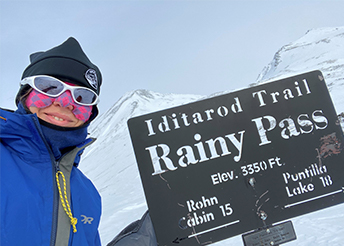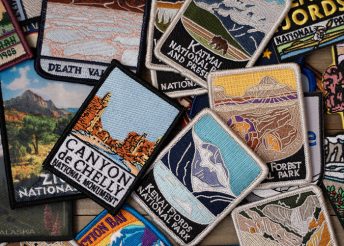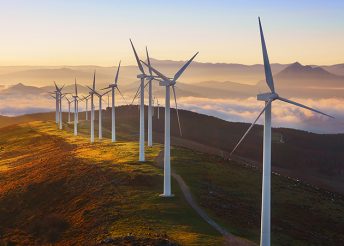As a non-runner, I’m often shocked at how people complete marathons like it’s a casual jog. Then there are ultra-marathons. And then there’s the Iditarod Trail Invitational (ITI) or “the world’s longest-running winter ultra-marathon”. While I can imagine running the 100m dash or maybe a friendly 2k, the grueling challenge of the ITI is beyond my imagination.
To help me and other mortals get a grasp on what the ITI is like, we spoke with Amber Bethe, who completed the ultra-marathon earlier this year. Amber lives in Anchorage, Alaska, and has been a member of ExpertVoice since 2010. She has trained on 75+ brands and is an industry professional, working for the Alaska Department of Resources and Alaska Department of Fish and Game.

Explain the Iditarod Trail Invitational race to us.
The Iditarod Trail Invitational is a human-powered race along the historic Iditarod sled dog race route. The ITI 350 (actual distance ~300 miles) ends in McGrath, Alaska and most athletes stop there. A smaller, more experienced group continues the grueling route to Nome. Racers have 10 days to get to McGrath and there are 7 checkpoints along the route. There are no gear requirements (with the exception of a tracker), racers are expected to be self-sufficient and know what they need to take care of themselves. The course is not marked and you may choose your route, but you must stop at all the checkpoints. The route to McGrath takes you from Knik (near Wasilla, Alaska), up rivers towards the Alaska Range, over Rainy Pass and down the Kuskokwim River and eventually to McGrath.
What made you decide to join such a grueling race? Were you on bike, foot or skis?
I have wanted to participate for several years, for me, it felt like a necessary rite of passage. Trail tales shared with me ranged from harrowing frostbite stories, through to “loved it and can’t wait to go back, sign up right now you fool!” I had signed up in 2019 to bike it but backed out due to a shoulder injury. I signed up again in 2020 and almost backed out as I hadn’t fully recovered from shoulder surgery, but in the end, switched to foot so I could still compete. Competing on foot was incredibly daunting as I didn’t feel like my winter bike racing experience would help much, but I’m so glad I went through with it.
What was your training like leading up to the race?
The best training analogy I’ve heard was that for marathons you train for the best, because what can go all that wrong in a marathon? For ultras, you train for the worst, and that sums up my training, I would try to get out and experience everything difficult: cold weather, soft snow, hiking through the night and bivy practice. Beyond that, I tried to make sure I was comfortable with all my gear. I wanted to feel confident being outside for long periods of time in a variety of conditions and be able to manage when things went wrong.
Describe your low point during the race?
There were so many! The sleep deprivation really got to me, I have never dug that deep or went that long with so little sleep. On the last morning, as I was nearing McGrath, my feet started to get cold. I hadn’t had too much trouble keeping my feet warm, and couldn’t figure out why they were so cold. I kept adding layers to the rest of my body, there really weren’t many layers I could add to my feet. I even stuck toe warmers to my shins and on top of my toes (under my gaiters). After about 2 hours of adding toe warmers, swinging my legs to get blood flowing, eating and trying to run, I realized that just maybe the toe warmers inside my shoes had died. My feet warmed up after replacing the appropriate warmer, it just didn’t occur to me that they could have died already. It’s amazing how dumb sleep deprivation can make you! I had a huge blister on one toe at the end of the race and it took a week for me to accept that it really wasn’t frostbite. At the finish, I discovered that it was -39°.
What was the most spectacular scenery you saw?
It’s hard to describe how beautiful it was to walk through the Alaska Range in winter. You can see the mountains in the distance for days before finally getting into the Alaska Range. I headed out from Puntilla Lake at about 3:00 am, the whole day walking over Rainy Pass was jaw-droppingly beautiful, starting under a bright moon and stars, later an incredible sunrise full of pastel mountain views and climbing over the pass and looking down onto the north side of the Alaska Range. After that you drop down into the Dalzell Gorge of Iditarod fame, I was so excited to finally see it in person! I had heard stories of harrowing trips over the past and was so happy my passage was drama-free. After the pass, you are well past the halfway point and I finally felt like I might really be able to finish this thing.
What gear did you use that was invaluable to you during the race and in training?
You are really dependent on your gear (and brain!) in a race where you know you’re going to be out overnight multiple times, in temperatures that may drop down to -20 or even -40. My sled was key, if only for efficiently carrying all the things. Most folks purchase a sled and then rig some kind of harness system, everyone has a different setup. I ended up using a race pulk from Northern Sledworks, rigged with nylon webbing, PVC pipe, carabiners and an old backpack belt. My footwear combination was also interesting, I wanted shoes that were big enough for (1) my arthritic toes and (2) swelling. I sized up a full size and used Hoka One One fast hikers (Stinson waterproof mid), with Injinji toe socks, waterproof sealskins socks and usually a toe warmer. I could not have made it without pogies, which are covers you can fit over a pole or bike handlebar. Mine are made for a bike but work well on my poles. I had a many-layered system to keep my fingers warm with pogies, down mitts, liner gloves (rarely removed) and extra-large size hand warmers.
Describe the atmosphere during the race…were you alone most of the time? Did you come across many people that were not competitors in the race?
The start is pretty festive with racers clumped up, it was the most social of the whole race. After the first few hours, I ended up alone and stayed that way for most of the race. I think this is the case with most of the athletes on foot and ski, though the bikers seem to stay together a bit more. I would typically see other racers at the checkpoints, depart alone early in the morning, get passed by several racers during the day and see the same people at the next checkpoint.
How did it feel when you finished?
Mostly just relief, I think I was too tired to feel much else.
Tell us about your recovery after the race (What did you do? How long was the recovery period?)
I was surprised at how slow the recovery was, I slept for most of 3 days! After the extreme fatigue passed I started to have trouble sleeping because my legs hurt, I would wake up every night with this deep muscle ache. I tried every topical pain reliever I could find and quite possibly an entire bottle of Tylenol, but in the end it just took time. After about two weeks that deep ache passed and I started to feel normal. After that, I felt pretty indestructible.
What was your pre-race meal? What did you want to eat so much when you were done?
Let’s talk about food in general. Food was my pre-race obsession, it was in my dreams, conversations, my constant companion. I wandered through stores looking at the nutritional content of every high-calorie food you can imagine. I talked to friends, made a spreadsheet with calories, counted grams of fat vs protein vs carbs, and weighed everything. I portioned and labeled food, made 3,500 calorie bags, weighed them again, threw out food, added in more calorie-dense foods, and on and on.
I don’t know how other people approach it, but until you have some good ultra-marathon experience, I don’t think anyone really knows what their food needs will be. What did I learn? All those weights and numbers of calories didn’t really matter, I ate about 3-5 snack size bags of food per day. High-density snacks like chocolate, nuts, and protein drink mixes did the trick but I didn’t always enjoy them. Prized possessions were chips, gummies, and a hot tea, protein mix, chai and powered milk combo that might just make me nauseous to drink today. At each checkpoint I would load up on anything edible I could get a hold of, breakfast, second breakfast, elevenses, you name it I would eat it.




